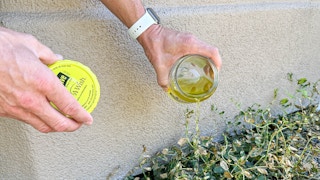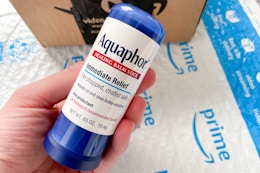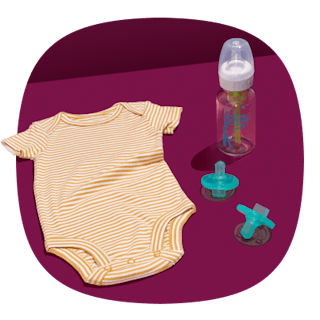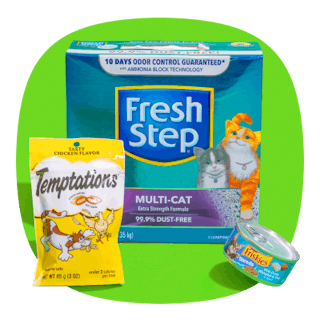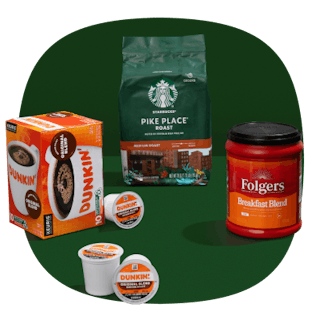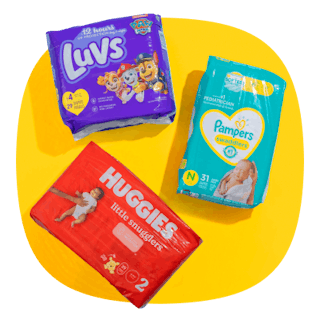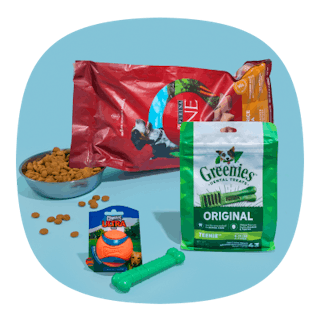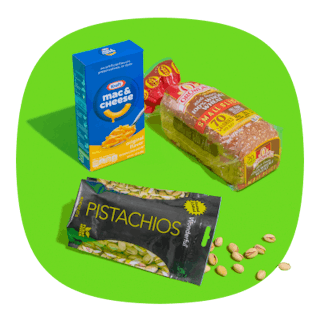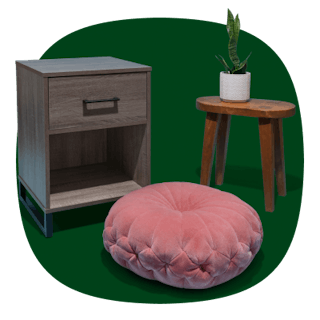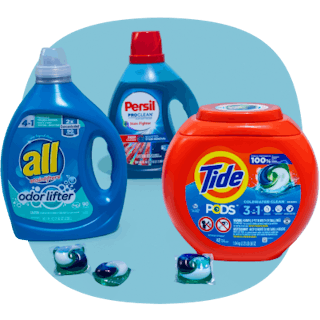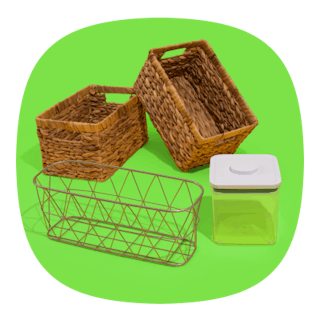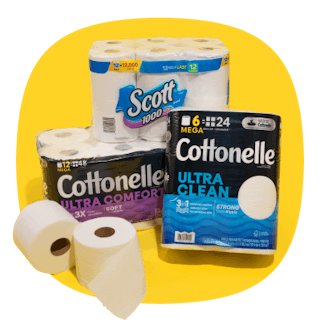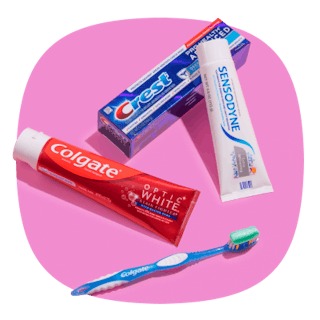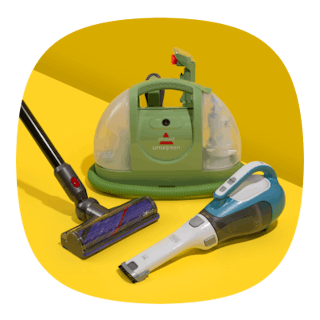Kitchen leftovers are often a hate ’em or love ’em debate in my house. Somehow leftovers aren’t the same the next day, and we have to make a quick decision at dinnertime. Instead of eating the same, boring meal again, I have some tips on how leftover uses can become weed killers, toilet cleaners, and homemade condiments.
With grocery prices still pretty high, leftovers are a good way to soften the blow of paying so much for basics like butter, eggs, and cheese. And, if you’re debating what should and shouldn’t be thrown away, remember that leftovers are only good for 3-4 days. When it comes to throwing away food items (not food), some reusable items can be upcycled into a brand new life. For example, using an empty gum container for spare change in your car.
If you’re a foodie looking for some inspiration, head to our recipes and dining deals pages. Also, download the Krazy Coupon Lady app. For more savings hacks and smart shopping tips, text HACKS to 57299.
1. Leftover uses for sauces and gravy — freeze ’em.

If you make too much tomato sauce, use an ice tray to freeze the rest. It’s one of the easiest leftover uses. Pour the cooled liquid in the tray and freeze for a few hours. Once frozen, break them apart and fill a freezer quart or gallon Ziploc bag. Need a small pot of tomato soup or pasta sauce? Just reheat frozen cubes later when you’re short on time.
2. Make mashed potato puffs with leftover mashed potatoes.

These are so good, you won’t want to wait until you have leftovers. All you need is a mini muffin pan and a little patience.
Ingredients:
- 2 cups leftover mashed potatoes
- 1/2 cup grated cheddar cheese (or your favorite cheese)
- 1/4 cup chopped fresh chives or green onions
- 1/4 cup breadcrumbs
- 1 egg, beaten
- Salt and pepper to taste
- Cooking oil spray
Instructions:
- Preheat the oven to 400 degrees. Lightly grease a mini muffin tin with cooking oil spray.
- In a mixing bowl, combine the leftover mashed potatoes, grated cheese, chopped chives or green onions, breadcrumbs, and the beaten egg. Mix until everything is well combined. Season with salt and pepper to taste.
- Using a spoon or a small ice cream scoop, fill each muffin cup with the mashed potato mixture. Pack it down slightly to ensure it holds its shape.
- Bake for about 20-25 minutes, or until the tops of the potato puffs are golden brown and crispy.
- Once baked, allow the potato puffs to cool for a few minutes. Next, gently remove them from the tin. Use a fork to carefully loosen the edges and pop them out.
Arrange your mashed potato puffs on a serving platter. Then, garnish with additional chopped chives or green onions if desired. These puffs are best enjoyed while still warm and crispy, but they’re just as delicious at room temperature.
3. Clean a toilet with flat cola.

Whether it’s a can or liter, flat soda just isn’t the same. And with soda prices the way they are, you want to find leftover uses for them. Instead, literally pour and flush it in your toilet. The corrosive acids in the cola will break down the stains.
RELATED: Get more DIY Bathroom Cleaning Essentials
4. Remove dark-wood furniture scratches with leftover coffee.

Dip a cotton ball or Q-tip in leftover coffee or directly into recently used grounds. Then, dab directly onto scratches. Immediately wipe away any liquid that has dripped onto non-scratched wood to prevent damage. Dark, strong coffee works best.
5. Whip up some mayo with leftover egg yolks.

All you need is two egg yolks, vinegar, salt, and a little bit of oil to make your own mayo without the additives. Check out this easy recipe:
- 2 leftover egg yolks
- 1 teaspoon Dijon mustard (optional)
- 1 tablespoon lemon juice or white vinegar
- 1 cup neutral-flavored oil (such as vegetable or grapeseed oil)
- Salt and pepper to taste
Instructions:
- Place the leftover yolks in a medium bowl. Add the Dijon mustard (if using), lemon juice or vinegar, a pinch of salt, and a dash of pepper.
- Begin whisking the egg yolks and other ingredients together, adding the oil gradually. Begin with a few drops at a time, whisking constantly. This step is crucial to ensure proper emulsification.
- Continue to add the oil in a slow and steady stream while whisking vigorously. The mixture will gradually thicken and become creamy as the oil incorporates into the egg yolks. Be patient and maintain a steady whisking motion.
- Once you’ve added all the oil and the mixture has emulsified into a creamy mayo-like consistency, taste and adjust the seasoning as needed.
- Transfer to a clean container or jar. Seal it tightly and refrigerate for up to a week.
Pro Tips: If you prefer a lighter version, you can use a combination of oil and either Greek yogurt or sour cream for a tangy twist. Make sure your egg yolks and other ingredients are at room temperature for better emulsification.
6. Leftover uses for the win: Clean a dirty grill with an onion that has seen better days.

Heat up your BBQ and use a fork to move a halved onion up and down your grill. Not only will you remove grease and grime, you’ll also add flavor to the food you’re about to cook. If you need to keep the party inside, use our delicious BBQ chicken crockpot recipe.
7. Kill weeds with pickle juice.

Using pickle juice to kill weeds is an unconventional approach that some gardeners swear by. The amount of salt and vinegar in pickle juice is perfect for killing weeds. However, it’s important to note that this method is not scientifically proven. That said, you might have varying degrees of success.
An alternative use for pickle juice is as a brine for protein (hello, fried chicken). Or, drink it to ease muscle spasms (yep, a gulp is supposed to help).
RELATED: 10 Homemade & Natural Weed Killers That Actually Work
8. Plant sprouted potatoes as leftover uses to create something new.

Instead of throwing away sprouted potatoes, carefully cut around the sprout or “eyes” so that you have a piece about the size of a chicken egg. Leave the pieces out for a couple of days. Then, dig a hole in your garden about four inches deep and plant the potato sprout-side up. Don’t water the potato until the sprout breaks through the soil.
Note: You can also grow vegetables from sprouted garlic and other leftover vegetable scraps. Check out 7 Vegetables You Should Never Pay For for more details.
9. Make crackers out of juice pulp.

Finally, I don’t have to feel guilty throwing away all that pulp. These homemade juice pulp crackers are creative leftover uses to reduce food waste. However, they’re also a flavorful and wholesome treat.
Ingredients:
- 2 cups juice pulp (from your favorite fruits and vegetables)
- 2 tablespoons ground flaxseed
- 2 tablespoons nutritional yeast (optional, for added flavor)
- 1 teaspoon dried herbs (such as oregano, thyme, or rosemary)
- 1/2 teaspoon garlic powder
- 1/2 teaspoon onion powder
- Salt and pepper to taste
- Water, as needed
Instructions:
- Preheat your oven to 350 degrees. Line a baking sheet with parchment paper.
- In a bowl, combine the juice pulp, ground flaxseed, nutritional yeast (if using), dried herbs, garlic powder, onion powder, salt, and pepper.
- Gradually add water to the mixture, a tablespoon at a time, until the pulp mixture becomes a cohesive dough. The amount of water needed may vary based on the moisture content of the pulp. Your goal is to achieve a dough that holds together without being too sticky.
- Place the dough onto the prepared baking sheet. Next, use a rolling pin to flatten it into a thin, even layer. Aim for a thickness of about 1/8 inch.
- Use a knife or a pizza cutter to score the flattened dough into a desired cracker size. This makes it easier to break the crackers apart after baking.
- Bake for about 25-30 minutes, or until the crackers are golden and crisp. Keep an eye on them to prevent over-browning.
Once the crackers are baked, remove them from the oven. Once completely cool, break the scored crackers along the lines you created earlier. Store in an airtight container to maintain their crispiness. They should last for about a week.
10. Trap fruit flies with stale red wine.

Pour about an inch of stale red wine into a glass or container and cover it with a paper towel. Poke a few holes in it. Flies can get in, but can’t get out. You can also create a paper cone (making sure it forms a small hole at the bottom) and secure it onto a jar or container with tape.
RELATED: 13 Natural Bug Repellents You Can Find in Your Pantry
11. Make a compound butter out of leftover fresh herbs.

Add this compound butter to fish and steak dishes for pure deliciousness. Here’s how to whip up your own herb-infused compound butter:
Ingredients:
- 1/2 cup unsalted butter, softened
- 1/4 cup leftover fresh herbs (such as parsley, thyme, rosemary, basil, chives, or a combination)
- 1 teaspoon lemon zest (optional, for a citrusy twist)
- Salt and freshly ground black pepper to taste
Instructions:
- Finely chop or mince the leftover fresh herbs of your choice. Mix and match herbs to create your desired flavor profile.
- In a mixing bowl, combine the softened butter, chopped herbs, and lemon zest (if using). Combine well until the herbs and zest are evenly distributed throughout the butter.
- Place the herb-infused butter mixture onto a sheet of plastic wrap or parchment paper. Roll the butter into a log shape. Use the wrap or paper to help you shape and compact the butter.
- Wrap tightly in the plastic wrap or parchment paper and refrigerate for at least 1 hour, or until the butter has firmed up.
Pro Tip: Once the compound butter has set, unwrap and slice it into rounds.
12. Create bread crumbs with stale bread.

Place leftover bread in an oven heated to 250 degrees. “Bake” for about 10 minutes, or until the bread has lost most of its moisture. Then, run the bread through a food processor or use a box grater to create crumbs.
13. Freshen air with citrus peels.

Boil citrus peels in water for a few minutes, then decrease to a simmer for as long as you like. Add more water if necessary.
14. Bake bread with sour milk.
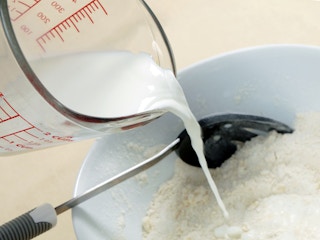
Sour milk may not be great for drinking, but it works perfectly well in bread recipes. You won’t be able to taste the difference, and it’s a quick substitute for buttermilk.
15. Make mac and cheese with leftover cheese.

Need leftover uses for a cheese platter that’s just hardening in your fridge? Combine the cheeses into one delicious pasta dish.
Ingredients:
- 8 ounces elbow macaroni
- 1/4 cup butter
- 1/4 cup all-purpose flour
- 2 cups milk
- 2 cups shredded cheddar cheese
- 1/2 teaspoon salt
- 1/4 teaspoon black pepper
Instructions:
- Cook the elbow macaroni according to the package instructions. Drain and set aside.
- In a large saucepan, melt the butter over medium heat.
- Stir in the flour, and cook for about 1-2 minutes. The mixture should be golden and starting to bubble.
- Gradually whisk in the milk, eliminating any lumps.
- Cook the milk mixture. Stir constantly, until it thickens and comes to a simmer. This should take about 5 minutes.
- Reduce the heat to low. Then, stir in the shredded cheddar cheese until it melts completely and the sauce is smooth. Add the seasonings. Stir until well combined.
- Remove the saucepan from the heat. Add the cooked macaroni to the cheese sauce. Stir until the macaroni is thoroughly coated.
- If the sauce seems too thick, you can add a splash of milk to achieve your desired consistency. Adjust the seasonings if needed. Serve hot.










